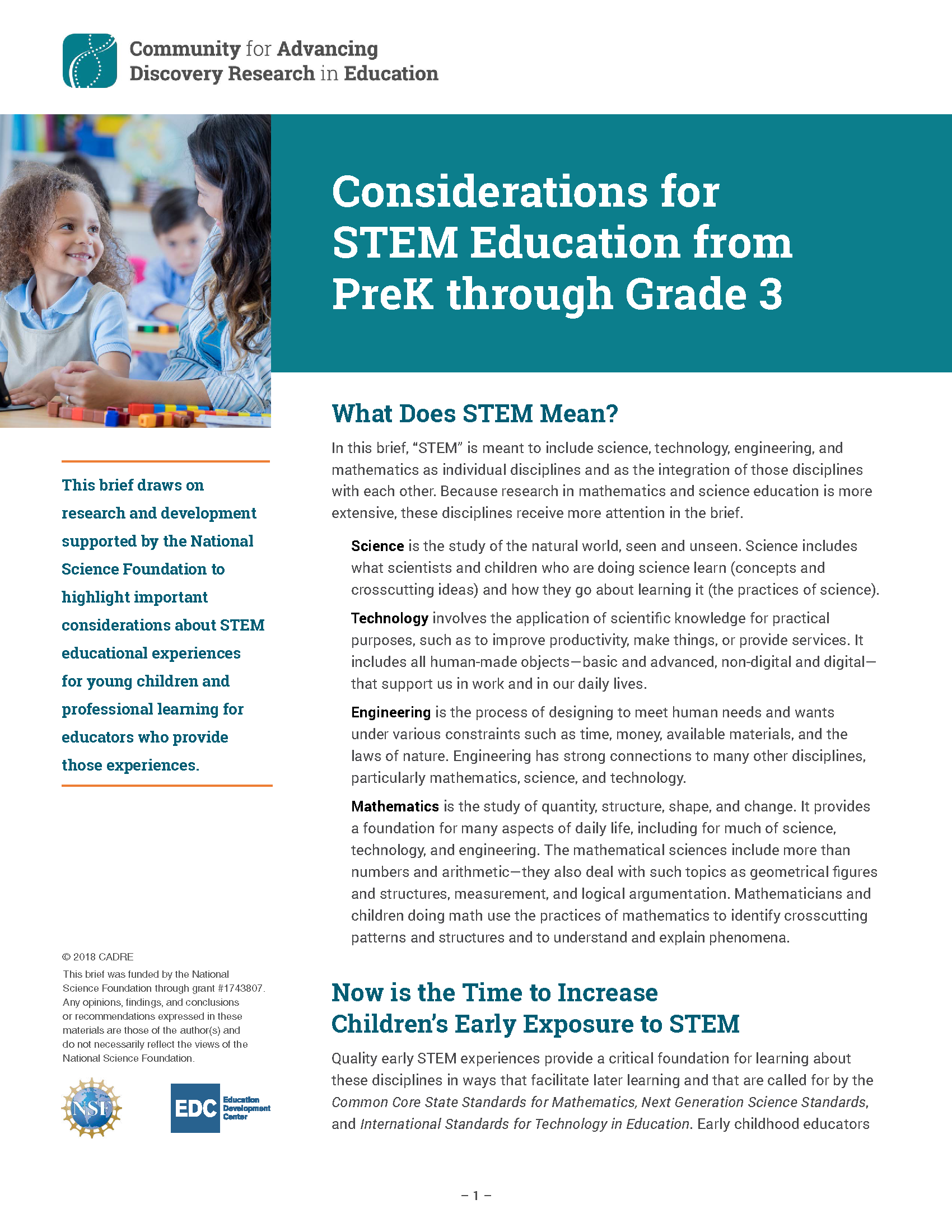Considerations for STEM Education from PreK through Grade 3
This brief draws on research supported by the National Science Foundation to highlight important considerations for educators and others who design and provide STEM educational experiences for young children.
